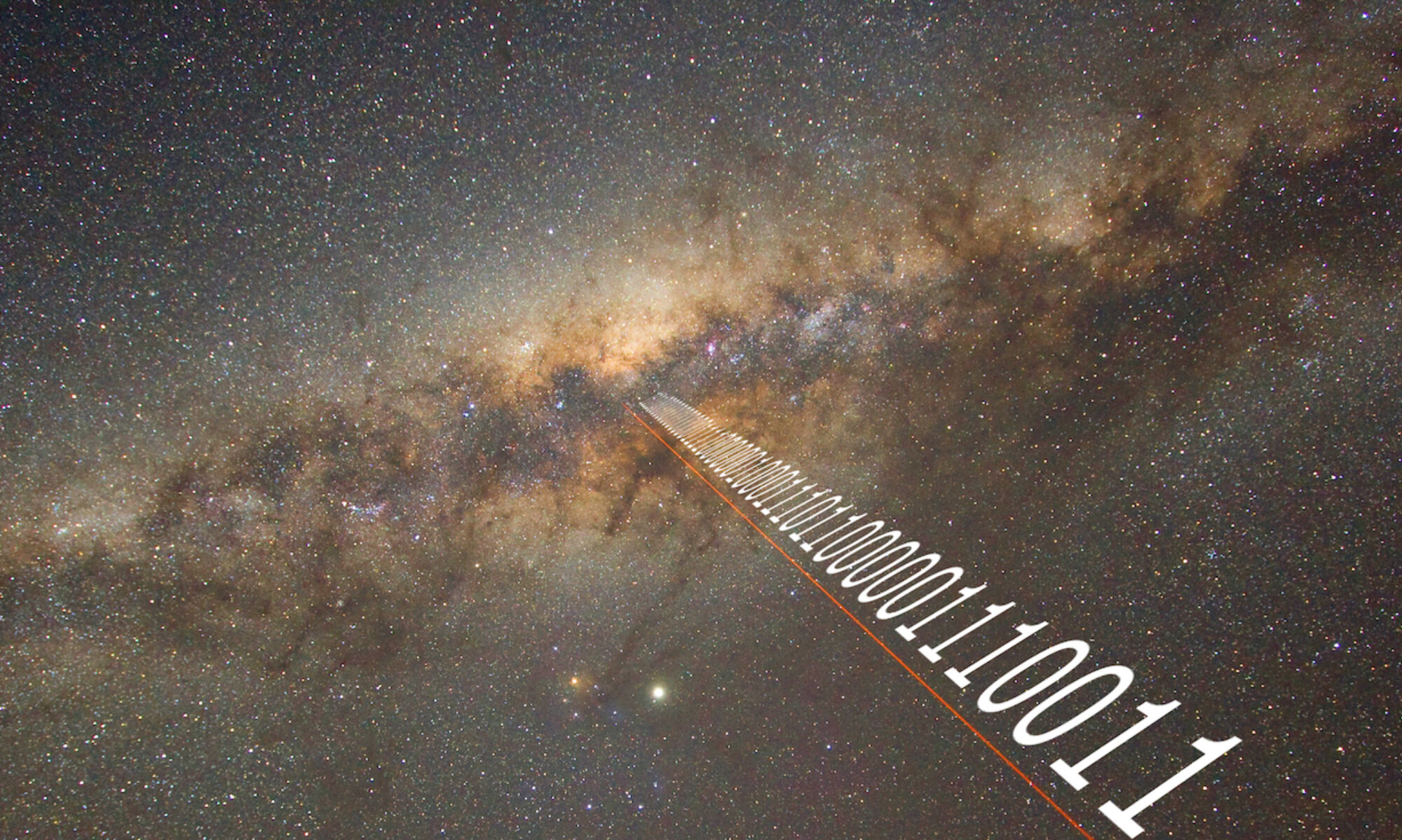
Every week, conditions permitting, we answer a question from our February 16, 2023 launch event Q&A session or from a Zooniverse participant. This week’s question comes from Manuel Soberanes Cobo: What would be considered clear indications that a radio signal is coming from an alien civilization?
This fundamental question has a two-pronged answer. We are looking for signals that are emitted beyond humanity’s reach and that natural systems cannot emit.
The first criterion rules out terrestrial technology. Our most distant ambassador, the Voyager 1 spacecraft, is currently 159 astronomical units away from Earth (24 billion km or 15 million miles). If we detect a non-natural signal emitted from a source located light-years away, we will know with certainty that it is coming from an alien civilization. To test for a distant source, we first confirm that the signal is detected in one, and only one, direction on the sky. A signal that is detected in multiple directions on the sky is automatically ruled out as anthropogenic interference. Signals from global positioning satellites, for instance, are often detected through the antenna beam sidelobes in many different orientations of the primary beam.
The second criterion rules out natural systems. Signals with certain unusual patterns in the time or frequency domain, such as the sequence of prime numbers seen in the movie Contact, cannot be produced by natural systems. Likewise, natural processes cannot emit powerful signals where the power is highly concentrated in the frequency domain. For instance, generating a signal at a frequency of 1 billion cycles per seconds (1 gigahertz or 1 GHz) with most of the power confined to a 10 hertz-wide window requires engineering. We can be confident about this statement because multiple particles must be involved in the production of a powerful signal. In nature, these particles experience random motions, which broadens the signal in the frequency domain because of the Doppler effect. Let us consider the conditions necessary to confine the bandwidth of a 1 GHz signal to 10 Hz: the relative velocities of the particles participating in the emission would have to remain below 2 meters per second, and this uniformity in velocity would have to be maintained over the entire extent of the emission site. Fluid astrophysical settings cannot produce these conditions because the random velocities of particles due to thermal motions are much larger than 2 m/s, even in the coldest environments. There are some natural systems with remarkable emission properties, such as astrophysical masers. However, the narrowest reported maser emission line width is 550 Hz, more than 50 times larger than the narrowband signals that we are seeking.
To summarize, UCLA SETI is currently searching for narrowband radio signals from distant sources. Of course, any signal that appears to simultaneously satisfy both ET criteria would undergo extensive follow-up observations and confirmation. We would reprocess the data with independent software, reobserve with the Green Bank Telescope, reobserve with different telescopes, and share our data for independent evaluation by other experts in the field.
Electromagnetically yours,
UCLA SETI
